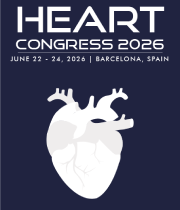Title : Computed tomography angiography-guided orbital atherectomy as an alternative imaging modality in severe calcification percutaneous coronary intervention
Abstract:
Background: The use of contemporary devices such as the Micro Crown Orbital Atherectomy System (OAS) has emerged as an option for calcium modification to facilitate stent delivery and optimal deployment in patients with severe calcification coronary lesions. Recent studies have highlighted the significance of utilizing intravascular imaging techniques, such as intravascular ultrasound (IVUS) and optical coherence tomography (OCT), to aid in the need for calcium modification procedures. These imaging modalities’ main purposes are localizing calcified lesion as well as lumen optimalization. However, despite their effectiveness, IVUS and OCT can be prohibitively expensive and accessibility to these modalities may be limited across medical facilities. Coronary computed tomography angiography (CCTA) has been proposed as an alternative option. CCTA is a non-invasive modality, thus it could be utilized to help roughly evaluating calcium burden and its location utilizing its cross-sectional projection. We present several cases of CCTA-guided orbital atherectomy PCI with satisfactory results.
Case summary: Four patients with recurrent angina were evaluated by CCTA. Their reports revealed multiple Three patients have severely calcified lesions, and one patient underwent calcium scoring evaluation without further CCTA with contrast. Orbital atherectomy followed by stent implantation guided by prior CCTA report was done. Target vessel reference diameter was ≥2.5 and ≤4.0 mm with lesion length of ≤40 mm and stenosis of ≥70% and <100%; and CCTA evidence of severe target lesion calcification. Two patients underwent OAS in staged PCI procedure and the rest underwent OAS and PCI during index procedure. One of the patients developed ST-segment elevation in inferior leads. Intracoronary nitrate and eptifibatide were administered and ST-segment elevation was resolved. No complications were observed in other patients. Final angiography of all patients showed TIMI-3 flow without dissection and residual stenosis. All patients reported symptoms free during follow-up.
Conclusion: These cases show that CCTA may serve as an alternative imaging modality in PCI centres without intravascular imaging to help operator assess calcified lesions before OAS and PCI.
Audience Take Away
- Sufficient lesion preparation before PCI in severely calcified lesion is important
- Orbital atherectomy uses a differential sanding mechanism of action to reduce plaque while potentially minimizing damage to the medial layer of the vessel and its use has resurged for the purpose of optimal lesion preparation
- Imaging assessment should be done to evaluate the desired location of orbital atherectomy
- CCTA may serve as an alternative to IVUS or OCT to predict the need for calcium modification technique



